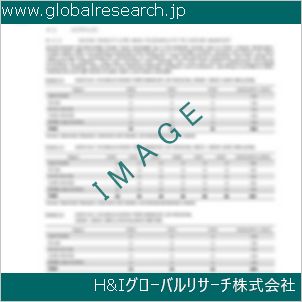Table of Contents
1 Industry Overview of Dibutylamine
1.1 Definition and Specifications of Dibutylamine
1.1.1 Definition of Dibutylamine
1.1.2 Specifications of Dibutylamine
1.2 Classification of Dibutylamine
1.3 Applications of Dibutylamine
1.3.1 Nuclear Application
1.3.2 Non-Nuclear Application
1.4 Industry Chain Structure of Dibutylamine
1.5 Industry Overview and Major Regions Status of Dibutylamine
1.5.1 Industry Overview of Dibutylamine
1.5.2 Global Major Regions Status of Dibutylamine
1.6 Industry Policy Analysis of Dibutylamine
1.7 Industry News Analysis of Dibutylamine
2 Manufacturing Cost Structure Analysis of Dibutylamine
2.1 Raw Material Suppliers and Price Analysis of Dibutylamine
2.2 Equipment Suppliers and Price Analysis of Dibutylamine
2.3 Labor Cost Analysis of Dibutylamine
2.4 Other Costs Analysis of Dibutylamine
2.5 Manufacturing Cost Structure Analysis of Dibutylamine
2.6 Manufacturing Process Analysis of Dibutylamine
3 Technical Data and Manufacturing Plants Analysis of Dibutylamine
3.1 Capacity and Commercial Production Date of Global Dibutylamine Major Manufacturers in 2023
3.2 Manufacturing Plants Distribution of Global Dibutylamine Major Manufacturers in 2023
3.3 R&D Status and Technology Source of Global Dibutylamine Major Manufacturers in 2023
3.4 Raw Materials Sources Analysis of Global Dibutylamine Major Manufacturers in 2023
4 Capacity, Production and Revenue Analysis of Dibutylamine by Regions, Types and Manufacturers
4.1 Global Capacity, Production and Revenue of Dibutylamine by Regions 2019-2024
4.2 Global and Major Regions Capacity, Production, Revenue and Growth Rate of Dibutylamine 2019-2024
4.3 Global Capacity, Production and Revenue of Dibutylamine by Types 2019-2024
4.4 Global Capacity, Production and Revenue of Dibutylamine by Manufacturers 2019-2024
5 Price, Cost, Gross and Gross Margin Analysis of Dibutylamine by Regions, Types and Manufacturers
5.1 Price, Cost, Gross and Gross Margin Analysis of Dibutylamine by Regions 2019-2024
5.2 Price, Cost, Gross and Gross Margin Analysis of Dibutylamine by Types 2019-2024
5.3 Price, Cost, Gross and Gross Margin Analysis of Dibutylamine by Manufacturers 2019-2024
6 Consumption Volume, Consumption Value and Sale Price Analysis of Dibutylamine by Regions, Types and Applications
6.1 Global Consumption Volume and Consumption Value of Dibutylamine by Regions 2019-2024
6.2 Global and Major Regions Consumption Volume, Consumption Value and Growth Rate of Dibutylamine 2019-2024
6.3 Global Consumption Volume and Consumption Value of Dibutylamine by Types 2019-2024
6.4 Global Consumption Volume and Consumption Value of Dibutylamine by Applications 2019-2024
6.5 Sale Price of Dibutylamine by Regions 2019-2024
6.6 Sale Price of Dibutylamine by Types 2019-2024
6.7 Sale Price of Dibutylamine by Applications 2019-2024
6.8 Market Share Analysis of Dibutylamine by Different Sale Price Levels
7 Supply, Import, Export and Consumption Analysis of Dibutylamine
7.1 Supply, Consumption and Gap of Dibutylamine 2019-2024
7.2 Global Capacity, Production, Price, Cost, Revenue, Supply, Import, Export and Consumption of Dibutylamine 2019-2024
7.3 USA Capacity, Production, Price, Cost, Revenue, Supply, Import, Export and Consumption of Dibutylamine 2019-2024
7.4 EU Capacity, Production, Price, Cost, Revenue, Supply, Import, Export and Consumption of Dibutylamine 2019-2024
7.5 China Capacity, Production, Price, Cost, Revenue, Supply, Import, Export and Consumption of Dibutylamine 2019-2024
7.6 Japan Capacity, Production, Price, Cost, Revenue, Supply, Import, Export and Consumption of Dibutylamine 2019-2024
8 Major Manufacturers Analysis of Dibutylamine
8.1 Manufacturer One
8.1.1 Company Profile
8.1.2 Product Picture and Specifications
8.1.2.1 Type I
8.1.2.2 Type II
8.1.2.3 Type III
8.1.3 Capacity, Production, Price, Cost, Gross and Revenue
8.1.4 Contact Information
8.2 Manufacturer Two
8.2.1 Company Profile
8.2.2 Product Picture and Specifications
8.2.2.1 Type I
8.2.2.2 Type II
8.2.2.3 Type III
8.2.3 Capacity, Production, Price, Cost, Gross and Revenue
8.2.4 Contact Information
8.3 Manufacturer Three
8.3.1 Company Profile
8.3.2 Product Picture and Specifications
8.3.2.1 Type I
8.3.2.2 Type II
8.3.2.3 Type III
8.3.3 Capacity, Production, Price, Cost, Gross and Revenue
8.3.4 Contact Information
8.4 Manufacturer Four
8.4.1 Company Profile
8.4.2 Product Picture and Specifications
8.4.2.1 Type I
8.4.2.2 Type II
8.4.2.3 Type III
8.4.3 Capacity, Production, Price, Cost, Gross and Revenue
8.4.4 Contact Information
8.5 Manufacturer Five
8.5.1 Company Profile
8.5.2 Product Picture and Specifications
8.5.2.1 Type I
8.5.2.2 Type II
8.5.2.3 Type III
8.5.3 Capacity, Production, Price, Cost, Gross and Revenue
8.5.4 Contact Information
…
9 Marketing Trader or Distributor Analysis of Dibutylamine
9.1 Marketing Channels Status of Dibutylamine
9.2 Traders or Distributors with Contact Information of Dibutylamine by Regions
9.3 Ex-work Price, Channel Price and End Buyer Price Analysis of Dibutylamine
9.4 Regional Import, Export and Trade Analysis of Dibutylamine
10 Industry Chain Analysis of Dibutylamine
10.1 Upstream Major Raw Materials Suppliers Analysis of Dibutylamine
10.1.1 Major Raw Materials Suppliers with Contact Information Analysis of Dibutylamine
10.1.2 Major Raw Materials Suppliers with Supply Volume Analysis of Dibutylamine by Regions
10.2 Upstream Major Equipment Suppliers Analysis of Dibutylamine
10.2.1 Major Equipment Suppliers with Contact Information Analysis of Dibutylamine
10.2.2 Major Equipment Suppliers with Product Pictures Analysis of Dibutylamine by Regions
10.3 Downstream Major Consumers Analysis of Dibutylamine
10.3.1 Major Consumers with Contact Information Analysis of Dibutylamine
10.3.2 Major Consumers with Consumption Volume Analysis of Dibutylamine by Regions
10.4 Supply Chain Relationship Analysis of Dibutylamine
11 Development Trend of Analysis of Dibutylamine
11.1 Capacity, Production and Revenue Forecast of Dibutylamine by Regions and Types
11.1.1 Global Capacity, Production and Revenue of Dibutylamine by Regions 2024-2029
11.1.2 Global and Major Regions Capacity, Production, Revenue and Growth Rate of Dibutylamine 2024-2029
11.1.3 Global Capacity, Production and Revenue of Dibutylamine by Types 2024-2029
11.2 Consumption Volume and Consumption Value Forecast of Dibutylamine by Regions, Types and Applications
11.2.1 Global Consumption Volume and Consumption Value of Dibutylamine by Regions 2024-2029
11.2.2 Global and Major Regions Consumption Volume, Consumption Value and Growth Rate of Dibutylamine 2024-2029
11.2.3 Global Consumption Volume and Consumption Value of Dibutylamine by Types 2024-2029
11.2.4 Global Consumption Volume and Consumption Value of Dibutylamine by Applications 2024-2029
11.3 Supply, Import, Export and Consumption Forecast of Dibutylamine
11.3.1 Supply, Consumption and Gap of Dibutylamine 2024-2029
11.3.2 Global Capacity, Production, Price, Cost, Revenue, Supply, Import, Export and Consumption of Dibutylamine 2024-2029
11.3.3 USA Capacity, Production, Price, Cost, Revenue, Supply, Import, Export and Consumption of Dibutylamine 2024-2029
11.3.4 EU Capacity, Production, Price, Cost, Revenue, Supply, Import, Export and Consumption of Dibutylamine 2024-2029
11.3.5 China Capacity, Production, Price, Cost, Revenue, Supply, Import, Export and Consumption of Dibutylamine 2024-2029
11.3.6 Japan Capacity, Production, Price, Cost, Revenue, Supply, Import, Export and Consumption of Dibutylamine 2024-2029
12 New Project Investment Feasibility Analysis of Dibutylamine
12.1 New Project SWOT Analysis of Dibutylamine
12.2 New Project Investment Feasibility Analysis of Dibutylamine
13 Conclusion of the Global Dibutylamine (CAS 111-92-2) Industry 2024 Market Research Report
| ※参考情報 ジブチルアミン(Dibutylamine)は、有機化合物の一種で、化学式は C₈H₁₈N です。CAS番号は 111-92-2 で、アミンの一種として分類されます。ジブチルアミンは、主に二つのブチル基がアミノ基に結合した構造を持ち、そのために特有の物理的および化学的性質を示します。 ジブチルアミンは、無色の液体であり、特徴的な臭いを持っています。水には溶けにくいですが、有機溶媒にはよく溶けます。このような性質から、ジブチルアミンは様々な用途で利用されます。特に、工業的な用途が多く、その利用範囲は広いものです。 ジブチルアミンは、主に触媒や中間体として使用されることが多いです。特に、ポリウレタンやその他の合成樹脂の製造において、硬化剤や触媒として重要な役割を果たします。また、ジブチルアミンは、医薬品や農薬などの合成過程においても中間体として使用されることがあります。これにより、さまざまな化学物質の合成を促進し、効率的な製造プロセスを実現します。 その性質から、ジブチルアミンは有毒性を持つ場合があるため、取り扱う際には注意が必要です。特に、皮膚や目に対する刺激性があり、吸入による健康被害も懸念されます。したがって、取り扱う場合には適切な安全対策が求められます。これには、防護具の着用や換気の確保などがふくまれます。 ジブチルアミンの製造法としては、主にブチルアルコールとアンモニアを反応させる方法が一般的です。この反応により、ジブチルアミンが生成されます。このプロセスは、比較的簡単で低コストであるため、商業的な生産において広く採用されています。 また、ジブチルアミンは環境への影響という観点からも重要です。化学物質が環境中に放出されることで、土壌や水源への汚染を引き起こす可能性があります。そのため、環境保護の観点からも、ジブチルアミンの管理と処理が重要視されています。 このように、ジブチルアミンは多様な用途を持ち、工業製品や化学合成において重要な役割を果たしています。その一方で、取り扱いに際しては適切な安全対策が必要であり、環境への影響についても十分な配慮が求められます。このバランスをうまく取ることで、ジブチルアミンを有効に活用し、持続可能な発展に寄与することが期待されています。 |
❖ 免責事項 ❖
http://www.globalresearch.jp/disclaimer












